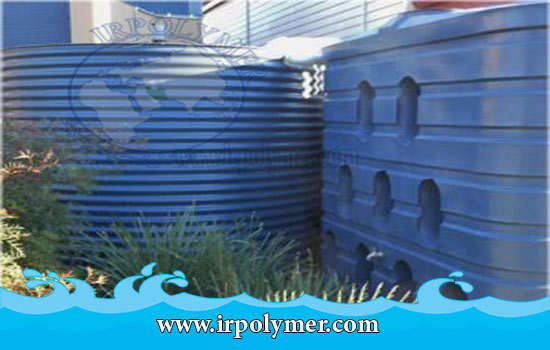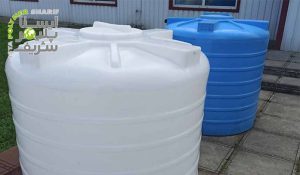If you also intend to buy a water tank for storing and keeping water, it is certainly important for you to know whether a polyethylene tank is better for storing water or a galvanized one? This article is written to answer this question and to help you dear ones choose the most appropriate option. Water tanks today are one of the most important parts of the facilities of any industrial and non-industrial complex.
Advantages and Disadvantages of Galvanized Water Tanks
Water tanks are divided into two categories: potable water storage tanks and non-potable water storage tanks. The question for everyone is what are the advantages of a polyethylene tank compared to galvanized water tanks. If you are looking for a tank to store drinking water, using galvanized water tanks is out of the question. Due to the high amount of heavy metals and zinc-coated consumption over time, galvanized water tanks gradually degrade the quality of water. On the other hand, the major drawback of galvanized tanks is the onset of corrosion at the weld points. These tanks will have the highest amount of corrosion along the weld line.
Galvanized tanks are a suitable choice due to their high corrosion resistance and lower weight compared to polyethylene tanks. Just note that these tanks may corrode in humid environments. Therefore, it is better to coat galvanized tanks to improve their performance. However, note that ABtank has effectively addressed this flaw in galvanized tanks by internally coating the tank.
Advantages and Disadvantages of Polyethylene Water Tanks
If you are looking for storage tanks that can provide you with high water quality, polyethylene tanks will undoubtedly be at the highest level. Polyethylene tanks, since they do not undergo corrosion, can provide high water quality over time for the consumer. Polyethylene water tanks have the highest application in the field of storing potable and non-potable water. Considering that polyethylene inherently has high chemical resistance, storing non-potable water even with high hardness will not affect their mechanical and chemical properties.
Among the disadvantages of polyethylene tanks compared to galvanized tanks is their lower environmental resistance compared to galvanized. They have lower UV stability, and if low-quality sheets are used, they will lose their resistance to chemicals and environmental factors. Also, algae formation in these tanks is more likely than in galvanized tanks.
Polyethylene tanks can be made from two types of HDPE and MDPE. In addition to the mentioned cases, polyethylene tanks can be used for storing domestic and industrial sewage. Therefore, a high volume of septic tanks or sewage treatment packages are produced by polyethylene today.
Price of Polyethylene Water Tanks and Galvanized Water Tanks
In terms of price, polyethylene water tanks and galvanized water tanks can be in the same range. It is worth noting that the method of execution and construction of the tanks is very important and can affect the final price. Currently, most galvanized sheets with high zinc coating are imported and are affected by the exchange rate.






